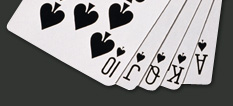Although poker has been universally popular for over 100 years, it was given a new lease of life by the revolutionary launch of online gaming at the end of the 20th century. Online poker is now a worldwide phenomenon that regularly attracts both experts of the live game and complete poker novices. And it is no surprise. Poker sites are numerous and regularly offer a range of benefits to subscribers, check this online poker bonus for example.
However, in order to be successful at online and live poker, you must first understand the basics of the game, including developing the ability to identify your and your opponents' playing styles. There are four predominant playing styles, each of which you should be able to recognize in a playing situation.
1. Loose/passive
A style often inadvertently adopted by amateurs, the loose/passive player is probably the weakest at the table. Being loose, the player will play too many hands, regardless of how weak their starting cards are, but will not bet aggressively on genuinely strong hands. As a result, profits cannot be maximized on good hands and money is lost on weak ones.
2. Tight/passive
A tight player will play far fewer hands, folding regularly to avoid losing money on weak hands. Being a passive better, however, this player is unwilling to bet aggressively on the hands he or she plays, checking and calling on a regular basis. Though this cautious approach can result in some winnings, it spells long-term failure for the player, as profits cannot be maximized through passive play.
3. Loose/aggressive
Sometimes branded 'reckless', the loose/aggressive player will play a high volume of hands, betting aggressively on the majority of these. The loose/aggressive opponent is always the most visible at the table and is usually a regular bluffer. Though betting aggressively on weak and strong hands alike is a risky strategy, the player may achieve success through forcing more passive players to fold on their good hands.
4. Tight/aggressive
Widely seen as the most effective poker player at the table, the tight/aggressive opponent will show a great deal of discipline and patience, playing few hands but betting aggressively on all those played. This style is most effective as it allows profits to be maximized on good hands, while aggressively forcing more passive players to fold and make mistakes.
Though the four styles seem quite disparate, as an amateur player it is not as simple as choosing one over the other. Learning poker dos and don’ts and developing a tighter game and a more aggressive betting technique takes patience and discipline, but will be essential factor for any amateur looking to improve their game.
